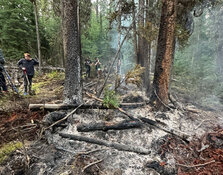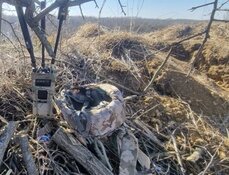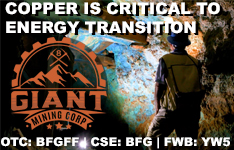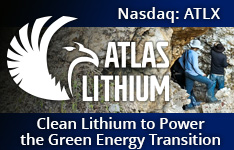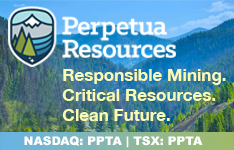Advanced organic waste treatment and resource recovery company Bion Environmental Technologies Inc. announced it has completed the technology-optimization report for its Ammonia Recover System (ARS) at Fair Oaks Indiana.
The optimized ARS proved it remains stable and can sustain continuous steady-state functions; it operates reliably; and is scalable. The ARS also displayed its capability to reach ammonia reduction objectives by evaporating one-third less water than was projected and modeled. This results in substantially improved economics, including reduced fertilizer manufacturing expenses.
The platform now stands prepared for the final design phase of a full-scale commercial system, which depends on project-specific details, location, and feedstock characteristics. Bion currently evaluates more than two dozen prospective projects, with dozens more in development.
"As we have indicated for some time, the ARS has exceeded our expectations. This report details by just how much," said Chief Executive Officer Craig Scott. "We are now sorting through and evaluating dozens of potential projects and partners to find the best fit to fill our initial fertilizer offtake agreements. Our goal is to identify a project (or projects) that will allow us to supply our unique organic nitrogen fertilizer to growers during the 2026 growing season."
The report outlines over a decade of ARS concept advancement and technology R&D, emphasizing what was accomplished during the enhancement phase at Fair Oaks. Bion enlisted Buflovak, a New York engineering company, as its ARS development collaborator, due to their specialized expertise in evaporation, distillation, and separation processes. The Buflovak engineering team participated integrally during six years of ARS R&D and testing, including offering guidance during the 18-month enhancement phase at Fair Oaks, and a final assessment of the report. The Buflovak engineering team remains available to discuss the report and its findings.
Economics were not assessed during enhancement, but Bion noted in a release that the considerable operational improvements that were achieved directly impact modeled system economics and fertilizer manufacturing expenses.
The Fair Oaks findings indicate operating expenses for a full-scale commercial system will be approximately 25% lower than previously modeled, with a corresponding reduction in fertilizer manufacturing costs. Modeled capital expense, either overall or as a function of fertilizer or treatment capacity, will decrease substantially, as well.
The Most Rapidly Expanding Area of US Agriculture
The organic food sector represents the most rapidly expanding area of U.S. agriculture, based on the U.S. Department of Agriculture. Nevertheless, something commonly referred to as the "organic yield gap" can reduce the productivity of these operations.
An absence of easily accessible nitrogen, similar to the synthetic nitrogen fertilizer utilized in traditional farming, constitutes a major factor why organic agriculture generates fewer pounds per acre. Organic crops don't receive that additional "boost" of development their traditional equivalents obtain — that's why organic fruit and produce tends to be smaller, the company stated. It also results in a greater carbon footprint for organic foods.
Bion's ARS handles and treats livestock waste flows with an emphasis on discharges from anaerobic digesters. It forms the foundation of the company's Gen3Tech technology, which generates renewable energy and clean water from livestock waste flows and eliminates the ammonia, then stabilizes and repurposes it into low-carbon and organic nitrogen fertilizers utilizing only the compounds in the waste flow itself, creating the easily accessible organic nitrogen fertilizer that cultivators require to enhance yields.
This summer, Bion revealed its "pure" commercial nitrogen fertilizer manufactured from livestock waste is now OMRI-listed for use in organic production. Bion's ammonium bicarbonate fertilizer constitutes a stable source of nitrogen upcycled from reactive ammonia in organic waste flows through a patented process. OMRI operates as an international nonprofit organization that lists products permitted for use in organic production under the USDA's National Organic Program.
Protecting Surface Waters, Aquifers, the Atmosphere
Bion stated its methodology will diminish the carbon footprint linked with organic systems and "significantly reduce nitrogen runoff and off-gassing to protect surface waters, aquifers, and the atmosphere. It can quickly bring soil microbes in organic systems back to a healthy and productive balance and reduce the yield gap of organic crops as compared to conventional."
An organic fertilizer, manure is conventionally administered to farmland before planting occurs. The volatile ammonia-nitrogen it holds — approximately 75% of the fertilizer's nitrogen/nutrient value — typically escapes to the environment. However, Bion stated its patented ARS technology focuses on this volatile and highly mobile ammonia nitrogen, stabilizes it with carbon dioxide also in the waste flow, and transforms it into ammonium bicarbonate, a 100% soluble nitrogen fertilizer that can be easily absorbed by plants and administered to organic crops.
"It is pathogen-free," the company stated. "So, unlike manure, it can be applied at any time in the plant growth cycle."
Bion stated it anticipated enhancement as ARS is expanded to commercial scale. "While engineering challenges are expected, Bion believes those risks are substantially mitigated because the ARS platform and the processes it uses perform better at larger scale," it stated. "Over the next several months we intend to evaluate additional modifications we believe could dramatically reduce system capital costs and operating expenses."
Bion stated the independent engineering report and the OMRI listing will enable it to advance with strategic relationships in the fertilizer industry.
The Catalyst: Europe Ahead of US
Based on a report from Markets and Markets, the marketplace size for organic fertilizers is valued at US$7.9 billion in 2024 and is projected to expand at a compound annual growth rate (CAGR) of 11.5% through 2029 to reach US$13.6 billion.
"The rising preference for environmentally conscious food fuels the growth of the organic fertilizers industry," the report said. "This transition underscores a wider dedication to sustainable farming methods and reducing ecological damage."
Governments worldwide are responding to this transformation by implementing regulations and incentives to promote organic farming, enhancing the demand for organic fertilizers, Markets and Markets stated.
The global marketplace for biogas is projected to expand by US$19.51 billion from 2024-2028 at a CAGR of 6.01%, based on a report by Technavio.
 Streetwise Ownership Overview*
Streetwise Ownership Overview*
Bion Environmental Technologies Inc. (BNET:OTCQB)
Europe is significantly ahead of America regarding utilizing the technology to handle organic wastes. Based on a 2022 report by Waste 360, there were approximately 17,500 such facilities in the European Union in 2016 and fewer than 350 in the U.S.
Scott observed that it's a resource that's being squandered here. "This is stuff that's already here, and you've got one of two choices: it either goes to atmosphere and becomes pretty nasty air and water pollution, or you capture it and harness it," he said.
Ownership and Share Structure
According to Reuters, about 20% of Bion Environmental is owned by management and insiders.
About 1.24% is with Centerpoint Corp. with 0.70 million shares. Less than 1% is held by institutions.
The rest is with retail.
Bion has a market cap of US$11.34 million. Trading over the past 52 weeks ranged from US$0.04 per share to US$0.57.
| Want to be the first to know about interesting Technology investment ideas? Sign up to receive the FREE Streetwise Reports' newsletter. | Subscribe |


